 Your new post is loading...
 Your new post is loading...
So in general, we want to find a way to decrease our costs to acquire customers, and for the customers that we do acquire, we want to make sure they stick around and aren’t too expensive to keep. So how do we do this?
The best way to cut down costs of a process that requires employee time is to identify where you can replace that time with content and tools. Doing this allows your teams to operate more efficiently and lets your customers learn and engage at their own pace. To understand this further, we’ll break down each step of the customer success journey and identify where we can swap employee resources for content....
When everyone on your content team works from the same core content strategy statement, your organization has the best possible chance of getting the results you seek.
I’m not talking about an editorial mission statement or vision statement. Those types of super-high-level statements typically get crafted once and apply to everything everyone does from then on. A core content strategy statement is more flexible and more performance-oriented, and you can create as many as you want. You might create one for a given content marketing initiative or for a specific audience. You can make it broad or narrow.
I introduced the idea of the core content strategy statement in Why You Need Content Strategy Before Editorial Planning, which I ended with a promise to follow up with another article. This is it. Explore the three things you can do to keep your content ideas on-strategy every time:...
Marketers are ramping up their technology investments to better understand consumer needs and behaviors. Technologies to power social marketing, digital commerce and marketing analytics are the highest priorities, per July 2015 research.
Gartner surveyed more than 330 organizations in the UK and North America on their 2015 marketing budgets and 2016 expectations. Almost two-thirds of respondents said that social marketing and digital commerce were leading technology investment priorities.
Additionally, 61% of marketers said that marketing analytics were a priority and more than half of respondents were prioritizing tech for customer experience and advertising operations.
Today more than ever, food has become one of the most important—and discussed—choices among U.S. consumers. Since food purchases are heavily influenced by trust, Boston-based consultancy C Space released a study exploring customers' perceptions. "In today's marketplace, consumers are more actively engaged than ever in choosing what foods to buy and what brands to buy them from," said Alan Moskowitz, director at C Space.
"Given the speed that information travels, brand trust can increase or erode very quickly in consumers' minds. For brands, staying close to their customers can help them stay in touch with evolving attitudes and help them collaborate with consumers on new products, packaging and marketing that earns or maintains trust."...
Much has been written about “millennials” and much of it makes sweeping assumptions, often representing this vast group as “the yoof,” a homogenous bunch of bright young things with idealistic worldviews and a love for over-sharing on social media. However, since the term was first coined, sections of this group have become proper grown-ups, albeit of a slightly different sort than the generation before. They aren’t the buyers of tomorrow; they are the buyers of today. Some are running proper, functioning companies and not just aspirational start-ups with their friends. Some are even doing both of these things and succeeding. Some are already political leaders, parents and professors.
“By 2017, the “millennial” generation is expected to outspend the baby boomers, according to a study by Berglass + Associates recruiting firm.” - CNBC
All this means that when it comes to luxury or premium brands, the millennial mindset and lifestyle isn’t something to consider for “future-proofing” workshop exercises; it’s something to act upon now. Those who don’t technically fit within the demographic are being influenced by the “millennial way,” either as their parents or as colleagues. Therefore, any brand looking to maintain or move into a premium or luxury space needs to take note and act fast. Let’s look at some of the key characteristics of this group and then explore the implications when it comes to brand design, experience and communications....
In the near future, the way businesses interact, engage, and sell to customers will be entirely different. The ground rules and the new ways of communicating with individuals will take the best of the best that exists today, learn from the failures, and make both sides happier along the way.
At Social Media Week Chicago, 1871’s CEO, Howard Tullman, presented 10 cultural trends and technological innovations that will impact businesses around the globe next year....
Some 58% of respondents said they were more likely to engage with brands online only if “it’s really easy and asks nothing of me.” In addition, 48% of respondents said they’d prefer brands to simply entertain them rather than ask them to do anything at all.
More disturbingly still for attention-hungry brand managers, the report also found that respondents “resent doing anything that appears to benefit the brand more than it benefits them.”
So what’s a lonely brand to do? And how did expectations get so high?...
To improve the impact of content marketing, companies need to put together a data-driven content marketing strategy, part of which includes looking at buyers’ personas and buyers’ goals.
Below are five steps to build a to connect buyers’ goals to your content marketing strategy.
Here are 5 steps you can use to connect your content to buyers’ goals....
Seemingly overnight, predictive analytics has moved from the province of statisticians into the conversations of marketing departments everywhere. And while new to the marketer's toolbox, a report from Forbes Insights indicates that the technology can produce significant results within a handful of years.
The survey of 308 CMOs and business unit directors, which was sponsored by Lattice Engine, found that nearly half of those organizations deemed “highly advanced” in their usage of predictive analytics credit the technology with increasing ROI by more than 25%. Marketers from these organizations, which made up 13% of the surveyed group, have worked with predictive techniques for at least five years and describe them as core functions within all of their marketing initiatives.
Some of the areas in which predictive analytics have paid off most, say these experienced practitioners, are preventing early attrition cost of customer acquisitions, digital promotions offered to specific target groups, lead scoring, and customer propensity to buy a specific product....
Understanding the psychology of consumers at different moments is more effective than just knowing their demographics or interests. Timing is everything in advertising, and mobile can wait for just the right moment to reach consumers.
Here are examples of brands that have successfully used a moments-based approach to mobile advertising....
All too often, e-retailers default to a flash sale when they want to boost limp sales. However, recent research has revealed that discounting can actually be a dangerous practice to your business’ profits, meaning that companies need to get to the root of their sales issues instead of relying on offering discounts.
As it turns out, discounting can cause your customers to devalue your product, and it doesn’t provide any long-term benefits. In fact, discounting can even be a slippery slope for businesses, snowballing until the companies are forced to offer discounts in order to get the same sales numbers they were previously getting. One study found that 81% of hoteliers are discounting more now than they were five years ago, and 75% said this had done damage to their brand.
Instead, e-retailers should step away from slashing prices and analyze what could be holding their sales back. Customers reported that they stopped buying because of shipping costs, not being ready to purchase, slow site speed, and a low-security site. By addressing these issues, you can increase your sales without resorting to discounts. For example, you might offer free shipping for orders over a certain amount, or you could add security logos to your checkout page to increase your customers’ trust in your website....
The number of UK consumers using social media to research what products are "best" has rocketed from 25% to 43% in the last year, according to the Adobe Digital Index (ADI) 2015 Holiday Shopping Prediction report. The study examined more than 1trn visits to 4,500 retail websites since 2008, with a separate survey of over 400 consumers per country in the UK, USA, Germany, France, Australia, China and Singapore.
"We’re seeing the rise of social media as a source of product reviews," says Ryan Dietzen, senior market insights analyst at ADI. "It’s a key part of the customer journey."
The story is the same across Europe, with the percentage of respondents in France using social media to research products jumping from 28% in 2014 to 35% this year. Almost half of respondents in the UK said product reviews are one of the top two influencers on them when making major purchases, while the number influenced by reviews was even greater in Germany at 64 percent....
The fear of missing out is an emotional trigger that undeniably leads to people clicking the purchase button in higher numbers. And when I think about companies moving away from discounts, I’m reminded of the epic fail that was JC Penney’s rebranding and decision to stop using coupons in favor of lowering prices across the board. When the coupons went away, so did millions of dollars.
But what if discount culture isn’t helping you reap the benefits you think it is? Slant’s infographic makes the case that maybe you should reconsider discounts. If the thought of losing out on the upcoming money-spending frenzy that is the holiday shopping season is frightening, this infographic isn’t just dropping bad news on you and fleeing the scene. It also gives actionable solutions that are proven to drive sales....
|
Complacency is not an option in today's marketplace. Changeable buying behavior, channel and technology proliferation, data profusion—these are just a few of the realities marketers face today that necessitate transformation. Whether it's improving on marketing strategies that work or taking an entirely new approach, marketers must shake up their practices in 2016.
Knowing where to start or what's most essential to improve on can seem overwhelming with so many possibilities. So, DMN asked 15 marketing leaders to provide insight into what they think should marketers do differently in 2016 to attract, convert, and retain more customers. Here, their advice....
While psychology and marketing are two very different fields, that doesn’t mean that learning psychology can’t help you.
In fact, I think it’s one of the most important things a marketer can study.
In this post, I’m going to show you eight different psychological principles and the ways they can affect your sales.
To take it even further, I’m going to show you how you can apply each principle to your business....
To say native content has grown since last year would be an understatement. In 2014, Pressboard combed through 1,500 pieces of content for our "best of" list -- this year it was closer to 7,000. To give you an idea of how far the space has come, we had to buy VR headsets just to review a couple of the entries.
2015 was the year that native content moved from experimental to fundamental and nearly every major publisher and brand discovered the power of stories, instead of ads. Here are some of the best from the last 12 months...
The research found that retail therapy is an emotional rollercoaster for consumers, with a high proportion of shoppers worrying about making a mistake when buying a product, despite the endless opportunities to compare and contrast online.
When it comes to bigger purchases, two-thirds of shoppers often choose between just two brands from the outset. For consumers who have only one brand in mind before shopping, seven in 10 do not even try another brand.
The research shows that shoppers with brands in mind before they start looking to buy are less likely to worry about the choice they’ve made after buying (27%)....
The holiday season is once again upon us and this year marketers have an unprecedented opportunity to blow their sales out of the water. For the first time in history, consumers over 50 make up the majority — 51 percent — of all of consumer spending according to just-released data from the U.S. Consumer Expenditure Survey.
While marketers are preoccupied with Millennials — who became the biggest adult age demo this year — consumers over 50 control 70 percent of our country’s wealth, making them a significantly greater holiday sales opportunity than their kids.
One might expect that 50+ would account for the majority of health (63%) and insurance (68%) expenditures. However, when it comes to buying for everyone on their holiday lists, consider that people 50+ are now responsible for 51 percent of all entertainment spending as well as 57 percent of big ticket items such as new cars and trucks....
According to Gartner, in just a few years, 89% of businesses will compete mainly on customer experience. And by 2020, the customer will manage 85% of its relationship with an enterprise without interacting with a human. This means that the customer experience will quickly overtake price and product as the key competitive differentiator among brands.
These statistics may be alarming for some. After all, the status quo for so long has been about marketing a great product or service at the right price, and you will have a constant flow of new customers. Businesses must quickly come to terms that this is no longer the case, or won’t be for much longer. Consumers demand a great experience across multiple channels, and are willing to pay more for it.
What Do Consumers See as the Ideal Customer Experience?
Research by Economist Intelligence Unit revealed that the top five areas consumers identified as leading to a positive experience included:
47% – Fast response to enquiries or complaints
46% – Simple purchasing process
34% – Ability to track orders in real time
25% – Clarity and simplicity of product information across channels
22% – Ability to interact with the company over multiple channels...
A majority of marketing campaigns (or at least the most successful ones) are based on a thorough understanding of the principles of human behavior.
If you are looking for some information about what makes us choose one product over another, for instance, I have a real treat for you.In this post, I’ll show you what influences our decisions and how you can use it to improve the effectiveness of your online marketing activities....
Making the most out of data means pulling the right insights and then using that info to figure out what's working—and what's not. “Knowing what is working makes all of the difference,” says Michael Schultz, VP of marketing and business development for marketing platform ClearSlide.
“Far too often marketers are in constant production mode. So rather than analyzing the data and seeing what sticks and why, you get anecdotal feedback about what's supposedly working. So being able to apply analytics—particularly predicative analytics—enables marketers to really zero in on what's really going to matter.”
Predictive analytics, Schultz says, allows marketers to “have a sort of game plan.” He says that crafting content or an entire strategy that's rooted in predictive analytics allows marketers to devise the right plays for success. In fact, Schultz says that looking at customers' past behaviors is like watching the playback films and then analyzing them so that you can create a strategy to win the game.
“Based on a bunch of different factors, [marketers] can recommend plays that guide customers in the order that they would like for them to go follow. It's very prescriptive,” he says....
What do a newly married couple, a recent college graduate, and an expectant mom all have in common? Yes, this sounds like the beginning of a bad joke, but in actuality, each of these consumers are experiencing life event changes. And when consumers make important life decisions or are in a state of change, these milestones tend to define spending habits.
A newly married couple may be ready to furnish their new home. Or a recent college graduate may be in market for a new vehicle. Whatever the circumstance, marketers can take advantage by sending offers to coincide with these moments.
Life event marketing isn’t new, but if you aren’t implementing this strategy into your marketing plans, it is time to reconsider. Historically, businesses understood the value of marketing based on life events but the most common challenge tended to be finding the data and acting on it while it was still fresh.
After all, if you learn about a newly married couple 3 months after the fact, many of the opportunities will have long passed you by. The world is now faster and data is created and collected instantly. Just as important, data solution providers have become more sophisticated in how they source these life defining moments, allowing marketers to target consumers before the opportunity is lost.
Take a look at some of the ways marketers use life event data to target consumers based on life-changing events....
I recently attended a workshop in which we created a customer-journey map for content planning. Before doing this exercise, I had only a fuzzy notion of what a customer-journey content map might look like, how to make one, and why anyone would bother.
It turns out, this map looks like a spreadsheet. You make one by filling the cells. You bother because doing so helps you answer the perennial question, What content shall we create?...
“Every good content strategy starts with a “content audit,” which is a fancy term for figuring out what you’ve got, what the other guys have, and most importantly what opportunities you’re missing out on. If you don’t know a whole lot about SEO and don’t have time to read a dozen content strategy books, try these quick and dirty tips to get a feel for what your current content situation is.
Let’s pretend for a moment that you’re a content strategist for Cheerios, the classic cereal brand from General Mills. Pop open an “incognito window” in your browser that’s detached from all of your personal search history....
To win the hearts and minds (and dollars) of consumers in their micro-moments, you have to do more than just be there. You have to be useful too. That means connecting people to what they’re looking for in real-time and providing relevant information when they need it.
Mobile adds a rich layer of context on top of intent that lets marketers create even more relevant messages in micro-moments. For example, when someone searches for digital cameras, are they at home, on the street, or actually in your store? Is it 6 p.m. Friday or 6 a.m. Monday? The answers to questions like these play a role in determining what problem consumers are trying to solve, what creative they'll respond to, and what marketers need to think about when trying to engage them.
And being useful in those moments matters. Take the fact that 51% of smartphone users have purchased from a company/brand other than the one they intended to because the information provided was useful.
Seventy-three percent of consumers say that regularly giving useful information in their advertising is the most important attribute when selecting a brand....
|



 Your new post is loading...
Your new post is loading...



![Keep Your Content On-Strategy With This Single Statement [Templates] | Public Relations & Social Marketing Insight | Scoop.it](https://img.scoop.it/PgZENjM22NAhc1RglFuNBjl72eJkfbmt4t8yenImKBVvK0kTmF0xjctABnaLJIm9)


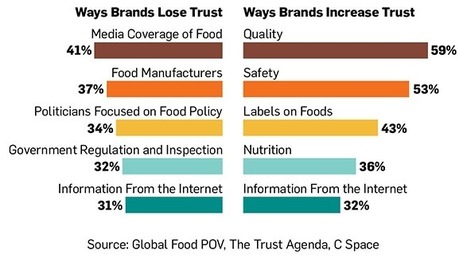




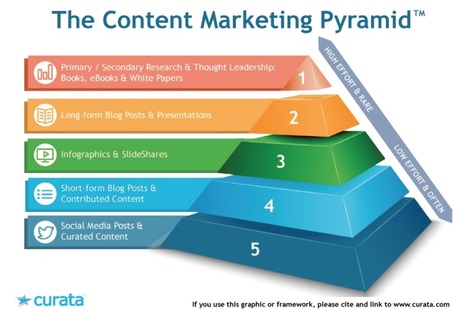







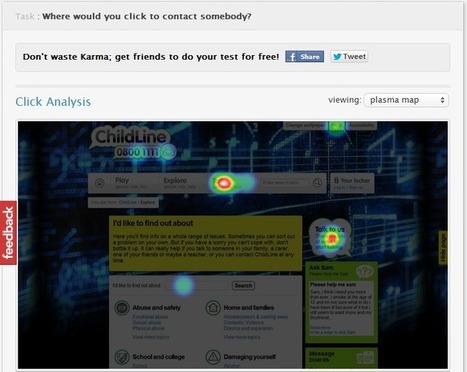

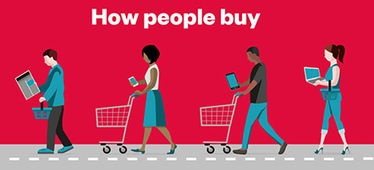









![Wonder What Content to Create? Try a Customer-Journey Map [Template] | Public Relations & Social Marketing Insight | Scoop.it](https://img.scoop.it/PrvWQ3EiXv1Xn1MMMUbw5zl72eJkfbmt4t8yenImKBVvK0kTmF0xjctABnaLJIm9)
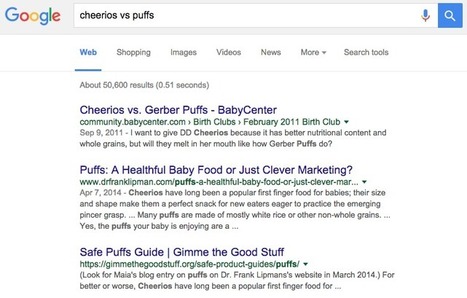
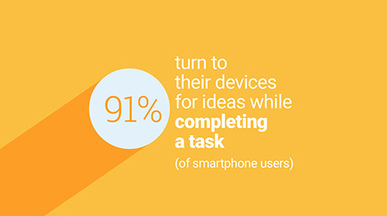





Having a balanced business model is the end all be all for every company. A strong sales team doesn't do any good if your business can't retain its customers.